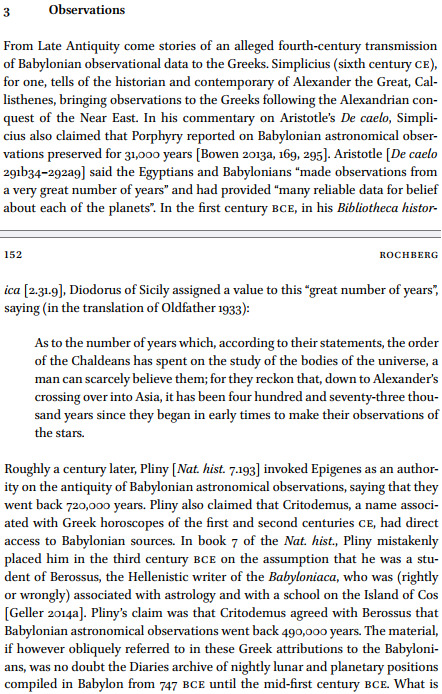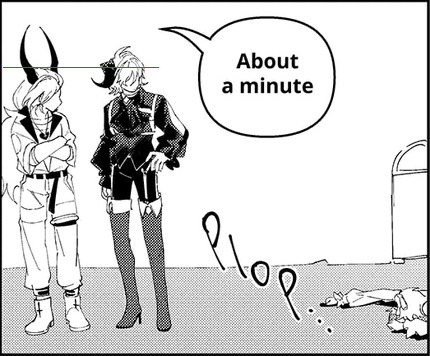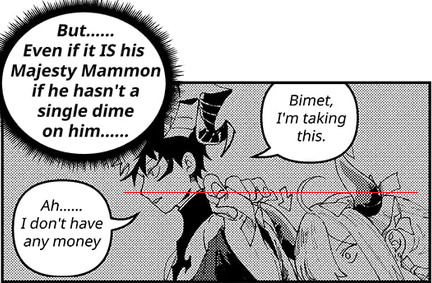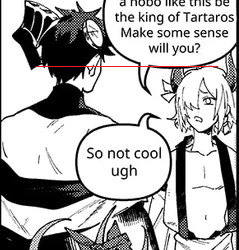#what makes a reliable estimator
Explore tagged Tumblr posts
Text
How to Choose the Best Construction Estimating Company in Australia
Choosing the right construction estimating company is one of the most important decisions a developer, builder, or property owner can make before launching a project in Australia. Whether the goal is to control costs, prepare accurate tender submissions, or gain investor confidence, the quality of your cost estimate sets the tone for everything that follows. But in a crowded market, how do you separate skilled professionals from inexperienced providers?
Start with Industry Experience
One of the first indicators of a reliable estimating company is experience. Firms with a long-standing presence in the Australian construction industry are more likely to understand local market conditions, labor trends, council regulations, and the cost implications of climate, logistics, and regional supply chains. An experienced estimator brings more than just numbers—they bring context and foresight.
Evaluate Service Specialization
Construction estimating is not a one-size-fits-all service. Some companies focus on residential housing, while others specialize in commercial or industrial projects. Make sure the company you choose has direct experience in your project type. An estimator well-versed in high-rise construction, for example, may not be suited for custom homes or heritage restoration.
Check Qualifications and Credentials
Professional qualifications can reveal a lot about an estimating company’s standards. Look for estimators who are registered with relevant industry associations such as the Australian Institute of Quantity Surveyors (AIQS) or have certification in construction management, civil engineering, or quantity surveying. A qualified team offers confidence that your estimate will align with best practices and legal standards.
Request Sample Estimates or Portfolio
Reputable estimating companies will often share anonymised samples of previous work or case studies. Reviewing these can help you gauge their attention to detail, formatting, and ability to tailor outputs to specific client requirements. A clear, well-structured estimate that explains inclusions and exclusions is a positive sign of professionalism.
Understand Their Estimating Methodology
Ask potential providers how they develop estimates. Do they rely solely on historical cost data or do they combine live supplier quotes and trade feedback? Do they use current estimating software like CostX, Cubit, or PlanSwift? A solid methodology combines technology, up-to-date data, and professional judgment to deliver accurate results.
Assess Communication and Transparency
Clear communication is essential in any business relationship, but especially in cost estimating. The best companies are transparent about their pricing, process, inclusions, and limitations. They will explain how estimates are structured, what assumptions are made, and how often costs are reviewed or updated. Avoid companies that offer vague pricing or rush through your questions.
Check for Turnaround Time and Scalability
Consider how quickly the estimating company can deliver results without compromising on quality. Construction timelines are often tight, and delays in budgeting or tenders can cause significant disruptions. Ask if the company offers different service tiers based on project size or urgency, and whether they can scale with your project needs.
Read Reviews and Ask for References
Online reviews, testimonials, and referrals from past clients can provide insight into how a company operates in real project environments. Speak with other industry professionals who have worked with the firm and ask about reliability, accuracy, and post-estimate support.
Clarify What’s Included in the Estimate
Not all estimates are created equal. Some include only direct construction costs, while others account for contingencies, design allowances, escalation, and permit fees. Make sure you understand the scope of what the company includes and whether it aligns with your project’s requirements.
Match Their Style to Your Project Needs
Finally, the best estimating company for your project is one that fits your goals, timeline, and communication style. Look for a team that treats your project with the same care as their own, one that’s willing to engage collaboratively with your designer, builder, or project manager.
FAQs
What qualifications should a construction estimating company have in Australia? They should have relevant construction or quantity surveying qualifications, be registered with industry bodies like AIQS, and demonstrate strong project experience.
How do I know if an estimator understands my project type? Ask for similar project examples or portfolios. A company that regularly estimates for projects like yours will understand the specific cost drivers.
Can I trust very low-cost estimating services? Be cautious. Low-cost services may cut corners or miss important items. Always review what’s included and ensure accuracy is not sacrificed for affordability.
How important is estimating software? It’s essential for accuracy and efficiency. Software like CostX or Cubit allows professional estimators to perform precise quantity takeoffs and apply current pricing data.
What should a professional estimate include? A thorough estimate should outline quantities, unit rates, labor, materials, allowances, exclusions, and a clear explanation of assumptions.
Conclusion
Choosing the best construction estimating company in Australia involves more than comparing fees. It requires a careful review of qualifications, methodology, experience, and communication style. A dependable estimator not only delivers accurate numbers but also becomes a trusted partner in shaping the financial success of your construction project. When selected wisely, the right estimating company can protect your investment and strengthen your project's foundation from the start.
#how to choose the best construction estimator Australia#top rated estimating firms near me#what to look for in an estimating company#best estimating company for commercial builds#residential estimating experts in Australia#construction estimate company qualifications#what makes a reliable estimator#estimator vs quantity surveyor in Australia#certified estimators Australia#estimating companies with CostX software#trusted estimating services for builders#tips for hiring a construction estimator#choosing the right cost consultant#freelance estimator vs firm estimator#how to vet estimating companies#estimating firm reviews Australia#estimating companies for custom homes#commercial estimator selection guide#what to include in an estimator checklist#estimator references and portfolios#communication skills of good estimators#estimating services turnaround time#estimator pricing transparency#estimating software comparison for professionals#signs of professional estimators#finding estimating companies for industrial projects#estimating company ratings Australia#pre-construction estimate providers#trusted building cost estimators Australia#working with estimating consultants Australia
0 notes
Text

Rochberg F. "The Babylonian Contribution to Greco-Roman Astronomy" pp. 147–159 (here pp. 151–152), Chapter 4.7 in Hellenistic Astronomy: The Science and Its Contexts (2020), ed. Bowen A. C., Rochberg F.
I just find the history of chronology and chronometry fascinating and it seems like an interesting point to consider when judging fantasy worldbuilding whether the in-universe dating is presented as “objective” (the in-universe dating being presented as fact and the reader not given any reason to question it) or “subjective” (there being in-universe disagreements about it and the reader – either more or less obviously – supposed to question it).
pro-tip: don't ever use the sentence "thousands of years" in your worldbuilding unless you really know what a thousand years is like
#i considered making this its own post but i do want to have all of this in one place#sorry!#bc i do realize most fantasy worldbuilding does not present in-universe dating as subjective so i can appreciate the point of the op#but since grrm was being called out specifically when he is also one of the rare subjective in-universe dating types – more interested in#meta-historiography i.e. how history of the world of asoiaf is written about in a kind of in-universe scholastic program#rather than e.g. writing a book about the world of asoiaf as an author himself giving “objective” information#(woiaf being the work of an in-universe maester is very intentional!)#like‚ having reliable dating methods is a fairly recent thing and people kind of forget how the advances of the last century or two have#changed our ability to rely on that#and how different saying “thousands of years” today is to having said “thousands of years” a couple centuries ago#the former fitting into an organized chronology going back 13.8 billion years#and the latter with only a crude relativistic reference frame if any at all (esp in a fantasy setting without e.g. biblical creation myths)#(the latter crude case being what grrm would be interested in)#j#chron#oh and to qualify the “having said “thousands of years” a couple centuries ago”: at the end of 17th century newton's calculation for the ag#of the earth was 50 thousand years#and if anyone could point me to any earlier (non-biblical) estimation i'd be grateful!#because i couldn't find any
61K notes
·
View notes
Text
Green energy is in its heyday.
Renewable energy sources now account for 22% of the nation’s electricity, and solar has skyrocketed eight times over in the last decade. This spring in California, wind, water, and solar power energy sources exceeded expectations, accounting for an average of 61.5 percent of the state's electricity demand across 52 days.
But green energy has a lithium problem. Lithium batteries control more than 90% of the global grid battery storage market.
That’s not just cell phones, laptops, electric toothbrushes, and tools. Scooters, e-bikes, hybrids, and electric vehicles all rely on rechargeable lithium batteries to get going.
Fortunately, this past week, Natron Energy launched its first-ever commercial-scale production of sodium-ion batteries in the U.S.
“Sodium-ion batteries offer a unique alternative to lithium-ion, with higher power, faster recharge, longer lifecycle and a completely safe and stable chemistry,” said Colin Wessells — Natron Founder and Co-CEO — at the kick-off event in Michigan.
The new sodium-ion batteries charge and discharge at rates 10 times faster than lithium-ion, with an estimated lifespan of 50,000 cycles.
Wessells said that using sodium as a primary mineral alternative eliminates industry-wide issues of worker negligence, geopolitical disruption, and the “questionable environmental impacts” inextricably linked to lithium mining.
“The electrification of our economy is dependent on the development and production of new, innovative energy storage solutions,” Wessells said.
Why are sodium batteries a better alternative to lithium?
The birth and death cycle of lithium is shadowed in environmental destruction. The process of extracting lithium pollutes the water, air, and soil, and when it’s eventually discarded, the flammable batteries are prone to bursting into flames and burning out in landfills.
There’s also a human cost. Lithium-ion materials like cobalt and nickel are not only harder to source and procure, but their supply chains are also overwhelmingly attributed to hazardous working conditions and child labor law violations.
Sodium, on the other hand, is estimated to be 1,000 times more abundant in the earth’s crust than lithium.
“Unlike lithium, sodium can be produced from an abundant material: salt,” engineer Casey Crownhart wrote in the MIT Technology Review. “Because the raw ingredients are cheap and widely available, there’s potential for sodium-ion batteries to be significantly less expensive than their lithium-ion counterparts if more companies start making more of them.”
What will these batteries be used for?
Right now, Natron has its focus set on AI models and data storage centers, which consume hefty amounts of energy. In 2023, the MIT Technology Review reported that one AI model can emit more than 626,00 pounds of carbon dioxide equivalent.
“We expect our battery solutions will be used to power the explosive growth in data centers used for Artificial Intelligence,” said Wendell Brooks, co-CEO of Natron.
“With the start of commercial-scale production here in Michigan, we are well-positioned to capitalize on the growing demand for efficient, safe, and reliable battery energy storage.”
The fast-charging energy alternative also has limitless potential on a consumer level, and Natron is eying telecommunications and EV fast-charging once it begins servicing AI data storage centers in June.
On a larger scale, sodium-ion batteries could radically change the manufacturing and production sectors — from housing energy to lower electricity costs in warehouses, to charging backup stations and powering electric vehicles, trucks, forklifts, and so on.
“I founded Natron because we saw climate change as the defining problem of our time,” Wessells said. “We believe batteries have a role to play.”
-via GoodGoodGood, May 3, 2024
--
Note: I wanted to make sure this was legit (scientifically and in general), and I'm happy to report that it really is! x, x, x, x
#batteries#lithium#lithium ion batteries#lithium battery#sodium#clean energy#energy storage#electrochemistry#lithium mining#pollution#human rights#displacement#forced labor#child labor#mining#good news#hope
3K notes
·
View notes
Text
Mask recommendations for ordering online (NA)
Note: for consistency, practicality, and simplicity all prices are listed in USD.
masknerd has a comprehensive data set on hundreds of masks he's tested according to his own criteria and methodology (pinned tweet). find his recommendations on his youtube channel. many of the following are on his list as well!
DISPOSABLE MASKS
3M Aura and Vflex: one of the most commonly recommended brands of N95. Where to buy?
- US: see here - Canada: see here - Multiple sizes per model. These suppliers are good for bulk ordering. If you aren't sure if something will fit you, check out the sample kits in the next recommendation - Price point: varies from $1-1.3 USD per mask depending on supplier
Breatheteq (US):
- KN95s that come in small, medium, large, or XS (kids) - Offers sample kits so you can test out what your size is - Comes in a few different colours. shoutout to the lavender - Earloop only - Price point: $69.75 USD for a 50-pack (~1.4 USD per mask)

Canadastrong (Canada):
- The Canadian equivalent to Breatheteq, but also carries N95s of other brands such as 3M Aura and Vflex, Vitacore, and Drager X-plore
Vitacore (Canada and US):
- N95 certified, but actually has 99% filtration - Both earloop and head strap versions (warning that the head strap seems to fit considerably smaller) - Regular and small adult sizes offered, also a kid's size - Price point: $33.99 for a 30-pack (~1.1 USD per mask)

Wellbefore (US, ships to Canada):
- N95s, KN95s, and KF94s - Head straps, normal earloops, or adjustable earloops depending on model - Kids/petite size available for certain KN95 models - Wide range of colours (excluding N95s) - Price point: varies per model, from $0.79 USD to $2.09 USD per mask - Also sells Covid tests, over the counter medication, and medical supplies

Masklab (US):
- This is an indulgent option for if you want to go out and look good, while still staying safe. These are masks that are part of your outfit - FFP2 certified, equivalent to KF94s - Standard size and slim fit series - Many beautiful patterns - Price point: $24.44 USD for a 5-pack ($4.88 per mask) for the patterned KF ones, ~$3.4 USD for the plain KF ones, ~$3.3 USD for the slim fit series, including patterns.

ELASTOMERIC MASKS
Flomask (US, ships to Canada):
- Reusable elastomeric mask (with replaceable filters) that meets KN95 standards - Two adult sizes (low/medium nose ridge and medium/high nose ridge) and a kid's size - Adjustable straps - Price point: $122 USD. 50-pack replacement filters: $81.46 (filters to be changed after 20-40 hours of use, depending on filter type)

A humble P100 elastomeric respirator from your local Home Depot or similar store! Magnitudes cheaper than the Flo mask (both the respirator itself and the filters)--however, I can't offer estimates for how often filters should be replaced. May not look pretty, but the most economical option for the highest degree of filtration if you aren't self-conscious.

General advice:
N95 or higher are the most reliable. They normally come with head straps, which offer better protection by making a tighter seal around your face.
But fit and comfort are the most important! Find a mask that fits your face and leaves the least amount of gap possible. KN95s are often more comfortable and breathable--find what's right for you.
You can wear different masks for different situations depending on risk level!
If you're hesitant to buy online, here's advice on how to tell if your respirator is legitimate.
A SIP drinking valve can be installed on any disposable mask to allow you to drink in public with less risk.
If anyone has other recommendations, please feel free to add!
3K notes
·
View notes
Text
A META-HISTORY OF ELYSIUM CORONA MUNDI
Chronicling (almost) everything we know about the development of Robert Kurvitz's quasi-sacral object complex

This post represents an attempt to gather (almost) all the reliable public info we have about the broader worldbuilding of Elysium Corona Mundi (the series to which Disco Elysium and Sacred and Terrible Air belong) and how it developed over time into one place, presented more or less chronologically and in a way accessible to fans unacquainted with the, shall we say, more arcane lore of Elysium. In the original incarnation of this post, basically every sentence was scrupulously referenced; however, referencing is a major pain in the ass on tumblr, so instead I just have a broad list of sources at the bottom and if you want to inquire any further into a specific claim you can just message me.
I'll also warn readers that the sections discussing the Torson & McLaine campaign and the (currently cancelled) sequel to Disco Elysium contain potential (albeit relatively minor) spoilers for the planned plot of that game. The creators still hope to make that game one day, so if you want to go in totally blind, you know what to avoid.
Evermier
The first serious worldbuilding project that Robert Kurvitz embarked on dates back to at least the year 1997. It was developed with his childhood friends in Estonia, including later Elysium worldbuilders Martin Luiga, Argo Tuulik and Kaspar Kalvet, and went by the name Evermier. This was a medieval fantasy setting formed around a tabletop roleplaying system that Robert Kurvitz and Martin Luiga have referred to as “bootleg Finnish Dungeons and Dragons,” but which Argo Tuulik suspects was actually a Powered by the Apocalypse framework. The vast majority of the boys’ time with Evermier was not spent actually playing any campaigns, but rather formulating the setting and mechanics (both Argo and Luiga ended up never participating in a roleplaying session of Evermier). Argo splits the time spent conceiving Evermier into two broad periods – one he dubs “Evermier 1.0,” which stuck close to traditional Dungeons and Dragons – and one dubbed “Evermier 2.0,” where no tabletop campaigns were ever actually played and all the time was spent system-building. Argo estimates this latter period lasted some 2-3 years.
Scope creep quickly hit the project, with character sheets evolving into whole character books. Luiga alleges that that “the wizard book” was supposed to have 350 spells altogether, each with at least a half-page story about the spell, in prose, and that “about a healthy third of the book got done in the end.” Argo gives a different number, stating that early estimates for it had more like 900 spells, but agrees that two-thirds of each page would’ve been reserved for “juicy literary stuff” about the spell in question while the rest of the page was dedicated to stats, and says that Luiga and Kaspar wrote a lot of excellent stuff for these spells.
Argo says there were about twenty different schools of technology (such as “metallurgy” and “optics”), at least twelve classes of mages, and “so many” subclasses of elves. There was also a subclass of dwarf that, instead of being stocky, chubby and bearded like traditional dwarves, were veiny and more like “Russian miners.” When implementing necromancers, Robert “zoned in on this soul aspect,” which later became the basis for Elysium’s pale. Argo describes these necromancers as “hobbits, but with these little lanterns that guide spirits or souls from this massive fog.” Luiga places the invention of this “fog of death with whom some could communicate” as happening late in Evermier’s development and likewise considers it a primitive precursor to what would become the pale.
The worldbuilders spent a lot of time gearing up for an ultimate roleplaying session that never ended up materializing, but their artist friend Jüri Saks drew illustrations in anticipation of it, including character portraits. Luiga’s character was a “sickle-elf” whose class was called “saint.” This saint character was a handsome elf with small pointy ears and a neat little beard, who wielded two “light swords” (possibly katanas), and a crossbow called Crucifix on his back. The character was from a “grim northern land” and was a “religious lunatic type” who believed in a “grim, monotheistic God.” Argo alleges that Luiga related to this character so much that it almost became a part of his persona; he “developed this mode that sometimes when we were drinking he happened to slip in, where he would start judging people. I would like to say that it still remained within the boundaries of normalcy, but uh, unfortunately it didn’t.”
Kaspar Kalvet at some point played an archer character named Minor Mortifer (“Small Death-bringer”), and there was also a dwarf king named Fuirum Thundergate.
According to Luiga, the name “Elysium” was suggested by someone on the dragon.ee forums, but it took half a year for Robert to start seriously considering it. This was back when the setting was still a medieval fantasy world. Luiga and Argo both agree that the historicized Elysium as we know it now was born around the time when Robert decided to get rid of fantasy races, because – as Argo puts it – “they were kind of stupid.” With this decision, Evermier underwent a modernization process of sorts, an attempt to bring the setting closer to real life, where many other fantasy elements were stripped away in favor of more realistic representations of cultures, mostly in the form of nations. Argo says that many of the fantasy races transformed over the course of this process into the nations of Elysium – the dwarves became the nations of Graad, the elves became the great desert isola of Iilmaraa (formerly Armaghast, a nod to Dan Simmons’ Hyperion, still referenced to this day with Iilmaraa’s Erg desert), the night-elves or star-elves eventually became Seol, and the snow-elves became Katla (which apparently has not changed too much since the Evermier days, and whose namesake is the dragon in Astrid Lindgren’s novel The Brothers Lionheart). Among the first innovations of the new modernized setting was the concept of floating magnet trains, later described in Sacred and Terrible Air.
After the Evermier setting had been discarded, many of its ideas ended up being repurposed into historical periods within the new historicized Elysium setting.
The Elysium tabletop campaigns
Between the years 2003 – 2007, three tabletop campaigns were played in the then newly formed Elysium setting. These all took place in Revachol during the Current Century and featured Robert as dungeon master. The first campaign seems to have been called Soul Milton’s World Autumn, the second one Riget and the final one known simply as Torson & McLaine, or alternatively the RCM campaign. The first two were played at Robert’s old apartment in the concrete block project at Mustamäe, while the third one was played in the house of Luiga's dad, which the three later lived together in following his death.
Soul Milton’s World Autumn
Of the three campaigns, Soul Milton’s is arguably the one most shrouded in mystery as it stands. It took place in Revachol and Martin Luiga played the titular character Soul Milton. The character has been described as “one of the cornerstones of the Elysium mythos” and an “aspiring world-historical person.” By the time of the campaign, Milton seems to have become an amnesiac as a result of “suppressing his own mind to protect himself from his enemies,” and in this process apparently also adopted a disguise by “putting another skin on himself” (what precisely that means, we don't know). He was “very rich” and came from a well-off family, had a complicated and possibly romantic relationship with his sister and was a “politician slash businessman” who “wanted to be the innocence of consumerism.” As it turns out, the enemies who were chasing him were the Therriers of Elysium’s final innocence, Ambrosius Saint-Miro (a major figure in both Sacred and Terrible Air and Full-Core State Nihilist, to be discussed later), who Soul Milton met at one point. Saint-Miro apparently told him that “there has never been an innocence who is also not an innocence.” This encounter places the Soul Milton campaign firmly after the events of Disco Elysium, possibly in the late Fifties or Sixties. During this campaign, Argo played Soul Milton’s horse carriage driver, a man by the name of Elroy Quint Duval.
Also associated with Soul Milton are two other characters. Before Sacred and Terrible Air was conceived, Robert had planned to tell the story of Elysium in three books; one starring Soul Milton, another starring a character named Dister, and the third a character named Dallasz.
Dister, or Marius Dijsters, was an extraphysicist and published author hailing from Oranje. He was a son of diplomats, one of them the grand ambassador of Oranje on Iilmaraa. He seems to have been a significant enough figure to have an entire strand of thought – Disterism – named after him (mentioned in the inside covers of Sacred and Terrible Air), and like Soul Milton, he had an antagonistic relationship with Ambrosius (as made apparent by an incident where he was threatened by the innocence’s Therriers at age 25). He is also apparently involved in some way with Theo Van Kok (of Sacred and Terrible Air fame), along with a Paul Messier (presumably the husband of Disco Elysium's Joyce Messier), apparently the beneficiary of such prestigious titles as "Enemy of the Press '67" and "Worst Person of the Year '67."
Information is rather scant on Dallasz, but during the making of Disco Elysium, there were plans to repurpose him into another project, a comic book named Mercurio Dallasz and the Twelve Kojkos which was going to be illustrated by Aleksander Rostov. This project unfortunately fell through, but we know the premise: a band of kojkos under Dallasz’s leadership attempt to assassinate innocence Saint-Miro. This was presumably an Inglourious Basterds type affair.
Riget
“It’s better to die in the Kingdom than live in a shithole.”
This was the tagline of Elysium’s second tabletop campaign, Riget, whose name is Danish for “kingdom” and was taken from Lars von Trier’s mini-series of the same name. Once more, the setting was Revachol, but this time it was limited to a peculiar part of it: Le Royaume (French for, again, “the Kingdom”) a vast network of dungeons and burial chambers two kilometers beneath the city, housing ancient ruins and remnants (quite possibly of the Seraseolitic civilization mentioned in Disco Elysium), along with treasures such as bioluminescent plants which have adapted to living in total darkness. The stars of this campaign were three impoverished children, all between the ages of 10-12 and members of a gang named “Earthworms,” who decided to venture down into the catacombs in search of valuable artifacts to sell. At some point, these kids somehow found themselves unable to get out of Le Royaume, supposedly trapped underground by demons who sought to use the children as vessels to escape back to the surface. When this campaign was being played, demons were still a part of the setting and haunted the halls of the underground network, along with monsters – such as the armakhaan beast, also known as Lelo Lelo, a terrifying blind and flightless hunter killer bird which was a mix between the xenomorph and cassowary. As for whether demons are still part of the setting in any way; both Argo and Luiga's statements are too ambiguous to reach any firm conclusion. Argo does note that the concept of 'demons' connotes something subtly different in Estonian than the scary red guys in popular Western culture, and are more like a primordial evil.
In the campaign, Argo played a boy named Miron, whose nickname was ‘Sneaker’, while Luiga played Joschka, a crippled boy with a bad leg. During the campaign, individual roleplaying sessions with Robert were held where the players’ stories evolved in parallel without them being kept on the same page. Each of them would get info the others were not privy to: Argo’s was that Joschka is unaware of the fact that he’s not considered a true member of the gang; in reality, he’s an outcast generally considered a weird, creepy weakling, and was only brought on for his lockpicking and mechanical skills.
Eventually, the Riget campaign got quite far into “Lord of the Flies territory.” Near the end, Sneaker and the third boy (played by another friend) conspired to kill Joschka deep underground.
Torson & McLaine
The worldbuilders continued to refine the roleplaying mechanics they were working with for the campaigns. By the time of Riget, the basics of the Metric system had been introduced, with the now familiar INT, PSY, FYS, and MOT. But according to Argo it was the RCM campaign, known principally as the Torson and McLaine campaign, which was “the first mature cycle of Elysium storytelling.” It took place, once more, in Revachol – this time in a ghetto called Jamrock, named after a Damian Marley song, and was focused on the goings on in Station 51 (renamed Precinct 41 by the time of Disco Elysium), the RCM’s lone precinct in Jamrock. The campaign took large amounts of inspiration from the TV series The Shield and its depiction of corrupt police officers and the intermingling of gang warfare and state-sanctioned violence. A central concept was: the cops are a gang, and the gangs are cops.
The RCM campaign began on a sort of prologue session, wherein Argo and Luiga played characters named Antwone Novak and Trinidad Tranquile respectively, two junior officers newly recruited into the RCM. Antwone was a “petit bourgeois type,” whereas Trinidad was a young communist who had recently been given time off work due to excessive violence. Luiga describes him:
He worked at a meat shop that belonged to Carson Torsson, Mack Torson’s dad, and had a system of stealing from work in order to ‘adequately compensate for his labour’. He also liked to practice a crude type of critical theory in the vein of ‘this building has been made that large to humiliate me, to show off with a power greater than me, to scare me into submission’. And he had a system of smoking no more than five cigarettes per day to cut down on smoking costs — Kim’s single cigarette habit might be a distant echo of that. He had, I think, a 7 in PSY (at least 5) and 2 in INT and mediocre physical stats, the core system was pretty much set by then.
At the end of this prologue session, Station 51 became the target of a terrorist attack. We don’t know much about the perpetrators beyond them being “Church of Evil type guys” in Luiga’s words, but the dice was rolled badly and Antwone and Trini both ended up dying in a “horsebombing” attack, falling onto the bridge outside the station.

Map of Station 51, located in a repurposed steel mill.
Going forward, Argo and Luiga had to find new characters to play, and they ended up going with ones they had earlier conceptualized, half-jokingly, on one of their many walks around Tallinn from parties and other events, since public transportation was notoriously unreliable. These characters were Chester McLaine, played by Luiga, and Mack “the Torso” Torson, played by Argo. Torson was derived in half from Vic Mackey, the protagonist of the Shield, and half from Argo’s own personality. Argo says that Luiga put his own personality into Chester as well, but isn’t sure where the other half of that character came from.
The main plot of the campaign centered on a revenge operation against those who perpetrated the attack on Station 51. In the second session of the campaign, Torson and McLaine are involved in a church raid; though Argo takes care to mention that he doesn’t think this is the church raid mentioned in Disco Elysium, and that it’s not a Dolorian Church but rather the “Armed Church of Saint-Michelle.” Among the tasks of Torson and McLaine were gathering “guns and drugs” for the “big revenge operation.”
Mack Torson was an idiotic body builder, an admirer of Lieutenant John “the Archetype” McCoy, the Station’s resident mass murderer, and altogether “way too stupid to concentrate on the main plot and politics of the police station,” focusing his attention instead on matters like “how to get it on with the captain’s secretary and tattooing the word ‘Jamrock’ on his body hundreds of times over.” Chester McLaine was a little more perceptive, wondering about things such as “what the hell is going on with the armour maker or Nix Gottlieb,” but was still an all-around uncritical person who put a lot of stock into “loving the captain” and “being a communist memebot.” McLaine was also “a sword guy,” since at this point in the worldbuilding swords were still viable weapons, with guns being slow to reload. Torson and McLaine lived together, along with two other cops, Sundance Fischer and Elfboy Williams. “Elfboy’s thing was being the dexterity bro, in which he continually lost to McLaine, and Sundance’s thing was having a fat ass and cleaning his guns all the time.” Torson had a wife named Tessa Torson, and later in life both Chester and Mack would apparently raise adopted daughters, Tessa and Triss (whether these Tessas are separate characters or represent the same character at different stages of development is unclear; Argo and Luiga seem to contradict each other, unless there's something very weird going on).
Torson and McLaine both regularly abused their powers, as RCM officers in general were prone to do, and in their heads they were justified in doing so. A highlight of the RCM campaign had been sessions dubbed “the Ballad of Chad Tilbrooks and Émile Mollins,” centering on two junior officers who were ritually abused and exploited by the older members of their station, including Torson and McLaine. At one point, Torson and McLaine were also involved in an interrogation of a local religious figurehead which devolved into mutilation torture, which only the “bullet-lobotomized” officer Damien “44” Latrec called out for what it was (enthusiastically). The interrogation ended up being ineffective as the religious leader simply “retreated into a happy place inside his head.”
The Captain of Station 51, Ptolemaios Pryce, was immensely respected and glorified by its officers, whereas the station’s lazareth Nix Gottlieb, while also respected, was generally resented and found hard to tolerate for being “an absolute horrible cunt.” In spite of this, Nix Gottlieb was known to have a curious friendship with Pryce, talking alone with him in the Captain’s office long into the night. This fact regularly perplexed the officers of Station 51.
Eventually, at some point in the campaign, Torson and McLaine would come to the focal point of the story, when they make a shocking discovery: the reason for Pryce and Gottlieb’s strange friendship is that they are both members of the top-secret underground anarchist organization the Ultra, and not only are plans underway for a national liberation movement freeing Revachol from Coalition control, known as THE RETURN, but the two have set their sights on a much larger goal: world revolution.
The novel cycle
No more campaigns were played in the Elysium world after 2007, when the boys stopped playing the RCM campaign (with the story unfinished). Robert Kurvitz instead shifted his attention to writing a book in the Elysium universe. Eventually the plan became for it to be the opening to a cycle of novels, totaling eight altogether. We have the English titles of each book and their epigraphs, along with the order of the series, from a post by Kurvitz on the dragon.ee forums.
They are as follows:
#0 A SACRED AND TERRIBLE AIR My heart will not rest until it rests in you. - St. Augustine
#1 THE COUNTERMEASURES What am I searching for in your dreams? I am not searching. I am merely cleaning up. - Christian Emmerich
#2 NO TRUCE WITH THE FURIES Man-kind, be vigilant! We loved you. - Julius Fučik
#3 MADRUGADA It must be lit as dreams, by lightning flashes only. - Witold Gombrowicz
#4 TWO HUNDRED AND TWENTY NINE DAYS REMAINING Evening brings the child back to the arms of the mother. - Sappho
#5 COALITION WARSHIP I don’t want to be in no indie shit. I want to be in the big ones. I want to be in the ones that matter. - Mickey Rourke
#6 WE ARE THE WAITING What remains, is longing for something completely different. - Luis Althusser
#7 INDIFFERENCE A great silence, some low pressure front is forming. - Arvi Siig
Sacred and Terrible Air was eventually released in Estonian back in 2013, and after the success of Disco Elysium plans were made to translate the book into English. Rumor goes that this translation was very far along or even finished, but unfortunately all plans for releasing this translation to the public have been halted with the ongoing legal dispute.
Fortunately, dedicated fans have taken it upon themselves to translate the book into English for those particularly interested. The most successful translation by far is the one by Group Ibex, which still receives updates to this day.
Read it here.
Full-Core State Nihilist
Many don’t know that Sacred and Terrible Air is actually not the only written work predating Disco Elysium. Before even Sacred and Terrible Air was released, Martin Luiga wrote a short story later given the English title Full-Core State Nihilist, which was uploaded to the old ZA/UM blog. While obviously not as meaty a text as Sacred and Terrible Air, it deals with some overlapping themes and gives us our first proper window into the nation of Mesque, so important to the broader narrative of Elysium.
Full-Core State Nihilist was later heavily edited and uploaded to nihilist.fm, another blog site which many of the ZA/UM members were active on.
Finally, in 2022, Martin Luiga translated the Estonian story, basing his English version on the original ZA/UM blog version, and uploaded it to Medium. This translation itself could be seen as a third edit of the story, featuring new references to Disco Elysium.
(As it happens, I have also arrogantly taken it upon myself to create my own translation of this brilliant story, which combines elements from all three versions, and is an attempt to render the prose in slightly less idiosyncratic English, closer to the “house style” of Disco Elysium, while remaining heavily informed by Luiga’s own translation.)
You can find Luiga’s translation here and my version here.
THE RETURN
In 2014, Robert Kurvitz pitched an idea to his friend and associate, novelist and businessman Kaur Kender, to turn the Torson & McLaine roleplaying campaign into a full-fledged video game for PC. The pitch proposed a 3000 EUR investment to produce a vision document, with design and artwork handled by Aleksander Rostov and Juri Saks, detailing the setting, plot, game mechanics and art style. In 2015, this document was finished, and by this time a provisional name for the project seems to have been settled on: THE RETURN.
This vision document reveals that the game was once planned to feature turn-based tactical combat. The plan was also for the player to create their own character from certain “archetypes,” each with different personalities, talents and appearances. Over time it became clear that these plans were too ambitious; by 2016 the archetypes had been narrowed down into a single character – the “disgrace to the uniform” Harry du Bois – and the prologue chapter of his story, set in Martinaise, was split off into its own game. This smaller project received the title that originally was given to the third novel in the planned cycle (which was almost certainly anticipated to center around the story of Precinct 41 in the year ’51) – NO TRUCE WITH THE FURIES.
No Truce became Disco Elysium and the rest, as they say, is history. But unlike many fans who view Disco as a singular statement that needs no further comment, the developers were far from done with the world they had created. The dominant internal view, especially among the original worldbuilders, was that Disco Elysium was merely a minor project to get ZA/UM’s foot through the proverbial gate. Work on the true game – the one they had wanted to create all along – could finally begin now.
As far as we know, the plot of the game would’ve stuck fairly closely to the events of the Torson & McLaine roleplaying campaign. The game was to open with an attack on Precinct 41, and the rest of the game would’ve been a revenge story of sorts. Players would assume control of Harry again, and this time his primary partner would be Jean Vicquemare, although there would be an assortment of other potential party members. The map would be at least four times bigger and set in Jamrock.
Plot points which would be explored in the sequel had already been set up in Disco Elysium – among these are Pryce and Gottlieb’s revolution, Le Royaume, Edgar Claire, and La Puta Madre. Cuno and Cunoesse would’ve featured as returning characters; not much is known about how Cuno and Kim would’ve been integrated into the game given how variable their endings in Disco Elysium are, but Argo says that he would’ve insisted on Cuno returning. X7 – the now-cancelled DLC project which Argo worked on for the remainder of his time at ZA/UM after Robert, Rostov and Helen were ousted from the company, would’ve featured Cuno as the protagonist. Meanwhile, Cunoesse was planned to reappear in THE RETURN as a leader of a gang of kids in Le Royaume, according to Martin Luiga.
Obviously, the characters of Precinct 41 would've featured heavily, and we'd be introduced to many familiar names which we were already given glimpses of in Esprit de Corps checks in Disco Elysium. One of these would be Lt. Berdyayeva, a superior of Harry’s, whose daughter is Jean Vicquemare’s ex. A character we know nearly nothing about except for the fact that he was conceptualized back in the tabletop days as a sort of joke character, but survived all the way into the planning stage for THE RETURN, is “Marivald the Merry Butcher” – what his role might've been, your guess is as good as mine.
Pryce and Gottlieb’s goals in the game might've involved an attempt to unite several diverse groups with a common interest in an independent Revachol; this would’ve included the besmerties, the West Revacholian crime syndicates mentioned in Disco Elysium. Prominent among them would’ve been La Puta Madre, a Mesque gang leader and drug manufacturer, a man of such immense power that he has RCM officers tending his poppy fields in terror (his influence also seems to survive past the events of the game; he gets a mention in Sacred and Terrible Air). The Madre would’ve apparently been an attractive feminine-presenting man, impeccably dressed and wearing beautiful makeup; his gender-nonconformity a way of projecting power over the traditionally macho culture of Villalobos. The rival gang, Ahura Mazda, led by a gangster known as the Mazda, would’ve presumably also featured prominently – Rostov recently released old concept art depicting one of their gang members.
There were more plans for the sequel that only came along after the development of Disco Elysium itself. Robert has talked about wanting to double down on events like the Mercenary Tribunal, handling big action scenes within the more closed literary format of the FELD dialogue system, hopefully allowing for even more variation than was possible in Disco's big confrontation. Another infamous idea was the inclusion of a second protagonist – a pregnant woman, about 5 months along. Kurvitz has mentioned this idea in interviews, saying that it would be "an incredible writing challenge" within Disco Elysium's internalized skill system: "It would be unbelievable to use our skill system to speak about the bodily sensations of having another organism inside of you, while you're in the setting and talking to another person." That said, the addition of an entire new protagonist is very ambitious indeed – it's not clear whether the idea would involve alternating perspectives of some sort, or a choice in the character creator of which one to go with, but Kurvitz made it clear that these would be entirely different characters, unlike many games which offer only a superficial choice between male and female playable characters. Kurvitz expressed some doubt about being able to include this in the game, but at least expected it to be integrated via an expansion post-release if not.
Miscellaneous info
Argo and Robert have both hinted that there is a metatextual element to the overarching Elysium narrative. Whenever presented with readings or theories that contextualize the game as some sort of story-within-a-story, they act coy and refuse to give any clear answers. Argo outright offered an interpretation of the pale which presents it as what happens as the narrative starts “leaking out” of the head of a reader or audience member no longer actively absorbed in the world and said that “Elysium is a fictional world that is aware that it’s fictional.”
Apparently related to this aspect of the narrative, according to Argo, are the three satellites in orbit above the world of Elysium – Iikon, Zenith and Shakermaker – which have been there since “before the 8,000 years of recorded history” and before “the Polycarpeum event.” The satellites have only been mentioned in niche corners of the currently published materials, and the innocence Polycarp has only been mentioned in secondary materials, such as the artbook and the inside covers of Sacred and Terrible Air, leading to speculation about him being involved with the pale and the memory of his reign being wiped from history.
Also related to the metatext, again according to Argo, is a character known as “the Man Behind the Black Sun” – he gets one mention by the Paledriver in Disco Elysium, but curiously she seems to refer to it as the title of a movie that was released in Mesque during the revolutionary era, potentially a boiadeiro picture starring the actor Gabriel Buenguerro.
The magical elements of the pre-Elysium fantasy world morphed over time into what is called “extraphysics” in Elysium. The innocences, the pale, and “plasm” all testify to this supernatural aspect of the setting.
At some point, Ambrosius Saint-Miro apparently constructs nihilist death camps, which Triss and Tessa (the adopted daughters of Torson and McLaine) end up in and eventually escape.
"Magpies" are not a real thing and were never a part of the original plan for the Elysium narrative. The concept artist who made the image from which the term was popularized has gone on record saying that he invented this idea himself and that it was taken from his own worldbuilding ideas. There is nothing to suggest that this was integrated into the game; Argo and Luiga reacted with confusion at the mention of this concept.
Kurvitz had an insanely ambitious list of projects he wanted to make in the Elysium universe before he was ousted from ZA/UM; "The last one I want to make, when I'm 50 or 60, that I want to absolutely go crazy on and throw out all commercial considerations and get this as conceptual as possible, is the tabletop setting. The working title for the tabletop setting is You Are Vapor. It will be a really, really, crazy pen-and-paper game."
List of sources:
All parts of Argo Tuulik's Human Can Opener Podcast episode.
Martin Luiga's Human Can Opener episode.
Martin Luiga's Medium account and other blog posts: Interview, 8 years ago..., Hello Fellow Worldbuilders, Correction, A Policeman In Revachol, Fuirum Thundergate (Substack)
Tweets by Martin Luiga: 1, 2, 3, 4
Tweets by Argo Tuulik: 1
The dragon.ee post about the novel cycle
"Welcome to Revachol" on the devblog
"Outro" by Robert Kurvitz, featured in the official Disco Elysium artbook.
Disco Elysium, Sacred and Terrible Air, and Full-Core State Nihilist. Obviously.
Possibly more that I'm forgetting. Feel free to ask.
352 notes
·
View notes
Text

For the past six years or so, this graph has been making its rounds on social media, always reappearing at conveniently timed moments…
The insinuation is loud and clear: parallels abound between 18th-century France and 21st-century USA. Cue the alarm bells—revolution is imminent! The 10% should panic, and ordinary folk should stock up on non-perishables and, of course, toilet paper, because it wouldn’t be a proper crisis without that particular frenzy. You know the drill.

Well, unfortunately, I have zero interest in commenting on the political implications or the parallels this graph is trying to make with today’s world. I have precisely zero interest in discussing modern-day politics here. And I also have zero interest in addressing the bottom graph.
This is not going to be one of those "the [insert random group of people] à la lanterne” (1) kind of posts. If you’re here for that, I’m afraid you’ll be disappointed.
What I am interested in is something much less click-worthy but far more useful: how historical data gets used and abused and why the illusion of historical parallels can be so seductive—and so misleading. It’s not glamorous, I’ll admit, but digging into this stuff teaches us a lot more than mindless rage.
So, let’s get into it. Step by step, we’ll examine the top graph, unpick its assumptions, and see whether its alarmist undertones hold any historical weight.
Step 1: Actually Look at the Picture and Use Your Brain
When I saw this graph, my first thought was, “That’s odd.” Not because it’s hard to believe the top 10% in 18th-century France controlled 60% of the wealth—that could very well be true. But because, in 15 years of studying the French Revolution, I’ve never encountered reliable data on wealth distribution from that period.
Why? Because to the best of my knowledge, no one was systematically tracking income or wealth across the population in the 18th century. There were no comprehensive records, no centralised statistics, and certainly no detailed breakdowns of who owned what across different classes. Graphs like this imply data, and data means either someone tracked it or someone made assumptions to reconstruct it. That’s not inherently bad, but it did get my spider senses tingling.
Then there’s the timeframe: 1760–1790. Thirty years is a long time— especially when discussing a period that included wars, failed financial policies, growing debt, and shifting social dynamics. Wealth distribution wouldn’t have stayed static during that time. Nobles who were at the top in 1760 could be destitute by 1790, while merchants starting out in 1760 could be climbing into the upper tiers by the end of the period. Economic mobility wasn’t common, but over three decades, it wasn’t unheard of either.
All of this raises questions about how this graph was created. Where’s the data coming from? How was it measured? And can we really trust it to represent such a complex period?
Step 2: Check the Fine Print
Since the graph seemed questionable, the obvious next step was to ask: Where does this thing come from? Luckily, the source is clearly cited at the bottom: “The Income Inequality of France in Historical Perspective” by Christian Morrisson and Wayne Snyder, published in the European Review of Economic History, Vol. 4, No. 1 (2000).

Great! A proper academic source. But, before diving into the article, there’s a crucial detail tucked into the fine print:
“Data for the bottom 40% in France is extrapolated given a single data point.”
What does that mean?
Extrapolation is a statistical method used to estimate unknown values by extending patterns or trends from a small sample of data. In this case, the graph’s creator used one single piece of data—one solitary data point—about the wealth of the bottom 40% of the French population. They then scaled or applied that one value to represent the entire group across the 30-year period (1760–1790).
Put simply, this means someone found one record—maybe a tax ledger, an income statement, or some financial data—pertaining to one specific year, region, or subset of the bottom 40%, and decided it was representative of the entire demographic for three decades.
Let’s be honest: you don’t need a degree in statistics to know that’s problematic. Using a single data point to make sweeping generalisations about a large, diverse population (let alone across an era of wars, famines, and economic shifts) is a massive leap. In fact, it’s about as reliable as guessing how the internet feels about a topic from a single tweet.
This immediately tells me that whatever numbers they claim for the bottom 40% of the population are, at best, speculative. At worst? Utterly meaningless.

It also raises another question: What kind of serious journal would let something like this slide? So, time to pull up the actual article and see what’s going on.
Step 3: Check the Sources
As I mentioned earlier, the source for this graph is conveniently listed at the bottom of the image. Three clicks later, I had downloaded the actual article: “The Income Inequality of France in Historical Perspective” by Morrisson and Snyder.
The first thing I noticed while skimming through the article? The graph itself is nowhere to be found in the publication.
This is important. It means the person who created the graph didn’t just lift it straight from the article—they derived it from the data in the publication. Now, that’s not necessarily a problem; secondary analysis of published data is common. But here’s the kicker: there’s no explanation in the screenshot of the graph about which dataset or calculations were used to make it. We’re left to guess.
So, to figure this out, I guess I’ll have to dive into the article itself, trying to identify where they might have pulled the numbers from. Translation: I signed myself up to read 20+ pages of economic history. Thrilling stuff.
But hey, someone has to do it. The things I endure to fight disinformation...
Step 4: Actually Assess the Sources Critically
It doesn’t take long, once you start reading the article, to realise that regardless of what the graph is based on, it’s bound to be somewhat unreliable. Right from the first paragraph, the authors of the paper point out the core issue with calculating income for 18th-century French households: THERE IS NO DATA.
The article is refreshingly honest about this. It states multiple times that there were no reliable income distribution estimates in France before World War II. To fill this gap, Morrisson and Snyder used a variety of proxy sources like the Capitation Tax Records (2), historical socio-professional tables, and Isnard’s income distribution estimates (3).
After reading the whole paper, I can say their methodology is intriguing and very reasonable. They’ve pieced together what they could by using available evidence, and their process is quite well thought-out. I won’t rehash their entire argument here, but if you’re curious, I’d genuinely recommend giving it a read.
Most importantly, the authors are painfully aware of the limitations of their approach. They make it very clear that their estimates are a form of educated guesswork—evidence-based, yes, but still guesswork. At no point do they overstate their findings or present their conclusions as definitive
As such, instead of concluding with a single, definitive version of the income distribution, they offer multiple possible scenarios.
It’s not as flashy as a bold, tidy graph, is it? But it’s far more honest—and far more reflective of the complexities involved in reconstructing historical economic data.
Step 5: Run the numbers
Now that we’ve established the authors of the paper don’t actually propose a definitive income distribution, the question remains: where did the creators of the graph get their data? More specifically, which of the proposed distributions did they use?
Unfortunately, I haven’t been able to locate the original article or post containing the graph. Admittedly, I haven’t tried very hard, but the first few pages of Google results just link back to Twitter, Reddit, Facebook, and Tumblr posts. In short, all I have to go on is this screenshot.
I’ll give the graph creators the benefit of the doubt and assume that, in the full article, they explain where they sourced their data. I really hope they do—because they absolutely should.
That being said, based on the information in Morrisson and Snyder’s paper, I’d make an educated guess that the data came from Table 6 or Table 10, as these are the sections where the authors attempt to provide income distribution estimates.

Now, which dataset does the graph use? Spoiler: None of them.
How can we tell? Since I don’t have access to the raw data or the article where this graph might have been originally posted, I resorted to a rather unscientific method: I used a graphical design program to divide each bar of the chart into 2.5% increments and measure the approximate percentage for each income group.
Here’s what I found:

Now, take a moment to spot the issue. Do you see it?
The problem is glaring: NONE of the datasets from the paper fit the graph. Granted, my measurements are just estimates, so there might be some rounding errors. But the discrepancies are impossible to ignore, particularly for the bottom 40% and the top 10%.
In Morrisson and Snyder’s paper, the lowest estimate for the bottom 40% (1st and 2nd quintiles) is 10%. Even if we use the most conservative proxy, the Capitation Tax estimate, it’s 9%. But the graph claims the bottom 40% held only 6%.
For the top 10% (10th decile), the highest estimate in the paper is 53%. Yet the graph inflates this to 60%.
Step 6: For fun, I made my own bar charts
Because I enjoy this sort of thing (yes, this is what I consider fun—I’m a very fun person), I decided to use the data from the paper to create my own bar charts. Here’s what came out:

What do you notice?
While the results don’t exactly scream “healthy economy,” they look much less dramatic than the graph we started with. The creators of the graph have clearly exaggerated the disparities, making inequality seem worse.
Step 7: Understand the context before drawing conclusions
Numbers, by themselves, mean nothing. Absolutely nothing.
I could tell you right now that 47% of people admit to arguing with inanimate objects when they don’t work, with printers being the most common offender, and you’d probably believe it. Why? Because it sounds plausible��printers are frustrating, I’ve used a percentage, and I’ve phrased it in a way that sounds “academic.”
You likely wouldn’t even pause to consider that I’m claiming 3.8 billion people argue with inanimate objects. And let’s be real: 3.8 billion is such an incomprehensibly large number that our brains tend to gloss over it.
If, instead, I said, “Half of your friends probably argue with their printers,” you might stop and think, “Wait, that seems a bit unlikely.” (For the record, I completely made that up—I have no clue how many people yell at their stoves or complain to their toasters.)
The point? Numbers mean nothing unless we put them into context.
The original paper does this well by contextualising its estimates, primarily through the calculation of the Gini coefficient (4).
The authors estimate France’s Gini coefficient in the late 18th century to be 0.59, indicating significant income inequality. However, they compare this figure to other regions and periods to provide a clearer picture:
Amsterdam (1742): Much higher inequality, with a Gini of 0.69.
Britain (1759): Lower inequality, with a Gini of 0.52, which rose to 0.59 by 1801.
Prussia (mid-19th century): Far less inequality, with a Gini of 0.34–0.36.
This comparison shows that income inequality wasn’t unique to France. Other regions experienced similar or even higher levels of inequality without spontaneously erupting into revolution.
Accounting for Variations
The authors also recalculated the Gini coefficient to account for potential variations. They assumed that the income of the top quintile (the wealthiest 20%) could vary by ±10%. Here’s what they found:
If the top quintile earned 10% more, the Gini coefficient rose to 0.66, placing France significantly above other European countries of the time.
If the top quintile earned 10% less, the Gini dropped to 0.55, bringing France closer to Britain’s level.
Ultimately, the authors admit there’s uncertainty about the exact level of inequality in France. Their best guess is that it was comparable to other countries or somewhat worse.
Step 8: Drawing Some Conclusions
Saying that most people in the 18th century were poor and miserable—perhaps the French more so than others—isn’t exactly a compelling statement if your goal is to gather clicks or make a dramatic political point.
It’s incredibly tempting to look at the past and find exactly what we want to see in it. History often acts as a mirror, reflecting our own expectations unless we challenge ourselves to think critically. Whether you call it wishful thinking or confirmation bias, it’s easy to project the future onto the past.
Looking at the initial graph, I understand why someone might fall into this trap. Simple, tidy narratives are appealing to everyone. But if you’ve studied history, you’ll know that such narratives are a myth. Human nature may not have changed in thousands of years, but the contexts we inhabit are so vastly different that direct parallels are meaningless.
So, is revolution imminent? Well, that’s up to you—not some random graph on the internet.
Notes
(1) A la lanterne was a revolutionary cry during the French Revolution, symbolising mob justice where individuals were sometimes hanged from lampposts as a form of public execution
(2) The capitation tax was a fixed head tax implemented in France during the Ancien Régime. It was levied on individuals, with the amount owed determined by their social and professional status. Unlike a proportional income tax, it was based on pre-assigned categories rather than actual earnings, meaning nobles, clergy, and commoners paid different rates regardless of their actual wealth or income.
(3) Jean-Baptiste Isnard was an 18th-century economist. These estimates attempted to describe the theoretical distribution of income among different social classes in pre-revolutionary France. Isnard’s work aimed to categorise income across groups like nobles, clergy, and commoners, providing a broad picture of economic disparity during the period.
(4) The Gini coefficient (or Gini index) is a widely used statistical measure of inequality within a population, specifically in terms of income or wealth distribution. It ranges from 0 to 1, where 0 indicates perfect equality (everyone has the same income or wealth), and 1 represents maximum inequality (one person or household holds all the wealth).
#frev#french revolution#history#disinformation#income inequality#critical thinking#amateurvoltaire's essay ramblings#don't believe everything you see online#even if you really really want to
249 notes
·
View notes
Text
How to subtly show the passage of time in your narrative
For instances where actual concrete numbers would be either jarring or unrealistic for your characters to know, like if they’re castaways in a remote region, prisoners of war, under house arrest and unable to access technology, or any other situation where a character cannot ground themselves in a reliable timeline. Or simply in fantasy settings that don't tell time in concrete numbers.
Giving your readers actual numbers can be jarring, whether it’s explicit measurements of things that invites readers to do the math that you might not have (thus risking plot holes), looking out of place in your narrative style, or giving numbers your characters realistically wouldn’t know.
Things like a 60lb bag of dog food, or an 8ft ladder, or a 2 liter bottle are different. Those are common measurements most people come across in conversation or otherwise. Taking an aside to make sure your readers know that a kiddie wagon is 3.5 feet long is… weird. Unless the story demands that, for some reason, this measurement is critical knowledge.
Passage of time is the same, and even more prone to potential plot holes. If you’re writing a story where time is critical, like characters are on a mission and timing must be perfect, then lacking numbers would be strange.
Anything else, though, and in the real world, we estimate all the time. “It’ll take maybe 45 mins” we say, not “it’ll take maybe 36 mins”.
But if you’re in a situation where characters don’t have clocks and calendars, their estimates should be broader and broader and more hyperbolic. “Talking for hours” “sleeping for days” etc. Otherwise, how do they have an exact sense of how much time has passed, and why is a specific number important? Readers can tell when a character or narrator is being hyperbolic.
If you want to get even more vague and subtle, you can either have characters notice environmental details, or clue the reader in without characters even knowing.
I think I’ve mentioned this already, but my go-to here for cases that last months is characters commenting on how long their hair has gotten, or the narration saying something like, “their hair has grown out over their eyes”.
But there’s a bunch of others
How thick the dust is on their surroundings
If the leaves on the trees have changed colors, grown back in, or fallen off
How long their fingernails are
How chipped nail polish has become
How nasty bruises have faded and changed colors
How much weight they’ve lost or gained
How much mold is on bread, or how much food has been eaten or rotten
How many cobwebs/spiderwebs have appeared
How desiccated the corpses of frogs or lizards have become
How grey their hair is, or their dog’s fur
How many weeds are growing in the sidewalk or in the gutters of their house
How many leaves are covering the lawn
How faded paint has become
How far natural roots have grown out, or hair dye has faded
All of those tend to be a more negative passing of time so here’s some lighthearted ones
How full the refrigerator door has become with children’s drawings
How cluttered the dresser is now with family photos
How worn a favorite pair of jeans/shoes or sweater is
How big kittens or puppies have grown
How many baby clothes don’t fit anymore
How many gummy fingerprints are all over the sliding glass doors
How worn the couch cushions are
How the floor is all scratched from dog nails or toy wheels
How much fur is everywhere
No matter what, even if characters do have clocks and calendars at the ready, you can still be subtle about it. Yet another example of showing, instead of telling, in about the same amount of words.
#writeblr#writing#writing a book#writing advice#writing resources#writing tools#writing tips#telling time
206 notes
·
View notes
Text

I've been thinking about the dunk a lot recently and doodled out what I'd like a Dunkleosteus terrelli to look like in my fish poster. And, well.... I might just have to make the canvas bigger once more. D. terrelli absolutely dwarfs most fish here, which even fit snugly inside its body!!!!!!

Alright, here's dunky with only the four other biggest fish (feat. the terrestrial megafauna apex predator, and the banana). Keep in mind I'm using the most up to date, most reliable estimate of ~3.5 meters. And people dare claim that "short" dunk wouldn't be frightening!?!?!? Short my ass!!!!! I would NOT want to be within biting distance of those massive jaws.
#you dont have to be whale shark sized to be an apex predator#this is what i meant with saying that its good to see animals in accurate proportion to one another#you may think that a dunkleosteus going from ten meters to four-ish meters makes it tiny and basically harmless#….until you remember that ten meters is fuckoff levels of ginormous and four-ish meters is really big!!!!! massive animal!!!!#how did they estimate the dunk to be ten meters anyway? their skull is like 70 cm long thats a tiny head on a long body#i guess they assumed the skull would be even bigger on the biggest guys its just kinda like. hmmm#dunkleosteus#dunkleosteus terrelli#fish#art
87 notes
·
View notes
Note
Hi! Love your blog, it's such a brilliant resource, thanks so much for writing it.
So, I'm looking for more information on ways that someone would go about breaking someone else's neck. Long story short, it's for a murder mystery situation where I need the investigators to be able to look at the injury on the victims (in an autopsy context, not necessarily on casual examination) and go 'oh, that's a specific technique and it suggests our killer has military or similar how-to-kill-people combat training'. Any suggestions?
A shovel through the spine at the base of the skull?
So, the headlock neck break is basically a fantasy. The amount of force you'd need to actually shatter someone's neck in the way presented would be superhuman. (Which does mean there's probably examples as industrial accidents, but industrial accidents are a somewhat uncommon murder method. Mostly because they're not especially portable.)
Hilariously, there are multiple attempted murder cases, where the would-be killers tried to replicate that neck break, only succeeding in annoy their victims, and telegraphing their intention. So, someone were to try to snap someone's neck that way, it would be an excellent indicator that they had no training what so ever.
There are ways that someone can kill with a headlock, such as a blood choke, but nothing that's going to concretely point the finger at someone with a military background.
Similarly, stab wounds can be very informative about the killer. But all you'll really gather is how familiar they are with human anatomy, and how comfortable they are with cutting people-shaped meat. This won't help you distinguish between someone who's done this before, and someone who's done this before for their country. (Incidentally, “people-shaped meat,” isn't strictly a joke. There are lot of potential careers and backgrounds where you could become pretty comfortable cutting into animals, either live or recently deceased. So, in this specific case, that's more about the mindset. Someone uncomfortable with that level of physicality, is like to leave behind hesitation wounds. These are smaller cuts, sometimes in the main wound channel, indicating that they're not really comfortable with what they're doing.)
So far as it goes, I'm more a fan of just ramming a blade into an artery, rather than slitting their throat. The latter is a lot more work, but the former requires you actually know where to find someone's arteries quickly and efficiently. Which isn't necessarily a sure thing.
Even tool selection won't necessarily tell you much. Someone who's using a military knife might be ex-military, or they could be someone who uses surplussed equipment because it's cheap and relatively reliable. And that's assuming you can concretely identify the knife from the wounds it leaves. Which is also not especially reliable. You can tell how far the blade penetrated, and roughly how large it is, but that won't tell you if it was a bayonet or some cheap gas station hunting knife of a similar size.
Firearms present a similar problem. Once you can track down the gun (if there were any intact bullets to compare, which isn't a certainty), you might be able to match the gun to the wounds. But, examining the wounds on their own (especially if the bullets are gone, or buried deep in the corpse) will only give you an estimate of the bullet's size. Here's a problem with this, did you know that .38, .380, and .357 magnum are all 9mm rounds? They're different cartridges, but the bullets they spit out are very similarly sized. You might be able to make some educated guesses based on the wound channel and burns, but these all fire a round that's roughly the same size. So, when someone looks at a wound and definitively says it was a .38, they don't know that. (Unless they found the shell casing. But even then, you're not likely to find a .38 or .357mag shell casing unless the attacker specifically dropped their spent brass and reloaded, as those are revolver cartridges. .380 is a semi-auto round, so those will get kicked out after each shot. And, yes, before someone complains, there is .357 SIG, that's a semi-auto cartridge. It's 9x22mm.)
Also worth remembering, you can't, specifically match a shotgun's ballistics, assuming the shell was loaded with shot, and not slugs. You may be able to match the mechanical wear on the casing itself to a model (or multiple models in some cases), but not a specific gun.
So, how do you know it was someone with military training? You don't. Learning that someone's been trained to kill is a bit easier to pin down, but the information isn't that useful. That doesn't tell you if they're ex-military, ex-police, or even just the product of an extremely messed up homelife with a prepper parent. Or, even just they got extremely lucky (or unlucky) with a single stab.
Now, it isn't pointless to try to determine that, as it can be helpful later to demonstrate that the eventual suspect had the training to kill in the method that the victim experienced. But it doesn't do much to narrow the suspect pool on its own.
Ironically, the killer not having combat training. So, with things like defensive and hesitation wounds, can be far more useful for narrowing the suspect pool. As an investigator, when you're talking to someone that you're sure has been certified in knife combat, isn't likely to be especially messy with their stabbings. (Though, to be fair, even a trained knife fighter might stab their victim many times, to ensure a faster bleedout, and not all of those hits are going to be especially artful.)
So, that's a long way from, “you can't really break someone's neck like you see in the movies.” You can kill people, and as an investigator, you can make a lot of educated guesses based on what you find at the crime scene. But, “this method means they were militarily trained,” doesn't really mean they were trained by the military.
-Starke
This blog is supported through Patreon. Patrons get access to new posts three days early, and direct access to us through Discord. If you’re already a Patron, thank you. If you’d like to support us, please consider becoming a Patron.
163 notes
·
View notes
Text
Alegría v Caruso: Day 2, Pt. 1

Everybody was seated, waiting for the trial to resume after what seemed like a never-ending weekend. Seriously, it felt like 4 months (and 7 days, if we want to be exact).
While Erick and Ángel felt a little uneasy after how Day 1 ended, Noemí was rather optimistic. She would feel comforted knowing Dulce was on the right side, even if the jury made a decision against her.
Lewis, however, felt pretty guilty for not sharing his suspicions regarding Caruso. In his defense, most people probably wouldn't like being told, "Your partner is a shady, lying jerk. And he squeezed my hand too hard."
When Lewis confessed this to Dulce, she forgave him. It didn't matter anymore. Yeah, maybe she wouldn't have believed Lewis, and that thought was unsettling.

On the other side of the room, Isabela was silently scolding Caruso for... reasons.
Hold on, were they trying to match outfits like Dulce and Antonio? The audacity when their claim was Caruso's "originality"...
It didn't take long for Caruso to be spared from the continuous bickering. The judge walked into the courtroom and took a seat, making Isabela settle down.
"This court is now in session," he announced. It was showtime.

Antonio stood up from his seat and walked over to the judge's bench.
“Your Honor, today we present a crucial piece of evidence: Ms. Alegría’s personal notebook, containing years’ worth of handwritten notes and original recipes.”
Chatter was heard around the room. What an interesting development.

Isabela shot up from her seat. “Objection! The notebook could have been fabricated over the weekend.”
A valid concern, but the judge was much too intrigued. “Overruled. We will hear the evidence first.”
Isabela remained firm, determined to cast doubt. “But, Your Honor. The defense was not made aware of this evidence before today.”
“Ms. Alegría could not find it, and we were unsure it would be found on time," Antonio explained.

That is technically the truth. Dulce was impressed with Antonio's ability to say just enough.
Antonio added, "Given that it contains important material to this case, we ask for it to be admitted."
“I will allow it.” His nod signaled for Antonio to continue.

“This notebook contains the ingredient lists and handwritten revisions. Momentarily, the ink analysis expert will verify when these entries were made.”
The screens behind him showed photographs of the pages from the notebook. The jurors nodded listened attentively.


Dr. Nadia Galecki, a forensic document analyst, was called to the stand.
Antonio began. "Dr. Galecki, can you explain how you determined the authenticity of this piece of evidence?"
"Using chemical testing, we conducted an ink dating analysis to determine when the ink was applied to the pages. The compounds in ink change over time, and by measuring these changes, we can estimate how long ago something was written."

"And what conclusions did you draw?"
"Based on our tests, the majority of the entries predate Ms. Alegría's relationship with Mr. Caruso by several years—some, nearly a decade."
The people in the courtroom whispered, and Caruso could not believe what was happening. How is he so good at this? He can't be real.
"Thank you, Dr. Galecki. No further questions." Checkmate.

It was Isabela's turn. "Dr. Galecki, ink dating analysis is not an exact science. How precise are these results, really? Could there be a margin of error of weeks? Months? ...Years?"
The analyst seemed to take offense to that. "It is a highly reliable method. Science is never absolute, but our tests can generally determine whether the ink was applied within a certain time frame. We use multiple techniques to ensure accuracy."
"But you also found that some entries were written after Ms. Alegría met Mr. Caruso, right?"
Dr. Galecki did not falter. "Yes, but it does not change the fact that the majority of the notebook is older than their relationship."
Isabela frowned.

Meanwhile, Dulce was pleased with how things were going. She hoped her joy wasn't too obvious. Winning was always fun.
Start from the beginning (Gen 2)
Previous | Next
#Dulce Alegria#Noemi Alegria#Erick Wade#Angel Alegria#oc mlt: Antonio Romero#oc mlt: Caruso#oc mlt: Isabela Campos#tjolc gen 2#tjolc#alegria legacy#matchalovertrait#joy of life challenge#joy of life legacy#the sims 4#ts4#sims 4#sims 4 legacy#tjol challenge
102 notes
·
View notes
Text
⚠️POLITICS⚠️
haha bet you forgot through the shitposts that i have a bachelor's degree in political science
here's a bunch of reasons why Kamala Harris is going to win the presidency because i can never find the effort to edit this into a video:👇
1. The current polls are VERY biased towards republicans. Most large polls just take the averages of other smaller polls, and right now the GOP has been dumping LOTS OF MONEY into publishing a lot of fluff polls in swing states to make themselves look better and to get more donations. Democrats don't usually publish their polls publicly. Odds are it's another red mirage.
2. The majority of people who Trump is catering to just don't vote. A lot of the latest pushes in the Aiden Ross Gamerbro communities are not reliable voters, even as loud as they are online. You cannot convince me that the twitter edgelord crowd has ever even seen a ballot in their lives.
3. In elections canvassing matters by about 300% more than advertising (my own ballpark estimate, not a specific datapoint, but still very true having worked in both canvassing and campaign marketing). The only people signing up to canvass for Trump are just stealing Elon's money, meanwhile people are flying out from all 50 states to swing states to canvass for Kamala.
4. "This is Hillary Clinton all over again." No it isn't. Hundreds of papers have been published that all agree that the reason Hillary lost (besides the Michigan debacle) was that largely a lot of people already assumed she was going to win, and so they didn't go out to vote. Sean Westwood did a really good paper on this in 2018, the more likely you are expected to win, the less of your supporters turn out. The entire narrative is that Kamala is either tied or behind, so anyone who supports her will NOT be sitting this one out.
5. Kamala just did a MASSIVE rally event in Texas. Texas. In this part of the campaign, any sane strategist would tell you to do ALL campaigning in the swing states, so this makes no sense... unless internal democrat polls are saying that Texas is now winnable for democrats. I will remind you that Texas is not NEARLY as red as the stereotype says, and Greg Abbot has himself previously said that Texas would have gone blue if not for all of the voter suppression he did. I'm not joking. This is real. The only reason Texas is still Lean Red instead of Moderate Blue is because of insane levels of voter suppression by Texas GOP.
6. When turnout is low, republicans win. When turnout is high, democrats win. Turnout is already STUPIDLY high in the early voting metrics. Even higher than 2020 (which i will remind you, we won) in some cases.
7. Voter demographics just aren't on Trump's side here. Lots of republicans have bled out of Trumpism, and in a close enough race as this one looks to be even a few thousand republicans deciding to stay home could make or break it in a lot of states. Additionally, while Trump has made a lot of progress in minority voters (daily reminder that the median voter is stupid enough for "median voter" to be used as a slur in political science communities), Kamala has the white woman vote locked down. And oh no! Look at that! Which voter demographic is orders of magnitudes both larger and more active voters than all of the minority demographics that Trump has been gaining in? Yep! Kamala's lead in the white woman demographic has entirely erased Trump's gains in other communities. Abortion was the final nail in the coffin of republican chances, they took the mask off too early. The dog caught the car and didn't know what to do with it.
8. Voter demographics are STILL not on Trump's side even ignoring all that other stuff, because keep in mind, Trump voters have largely been older people, and the waves of people who elected him previously have... well they've kind of died. Covid really didn't help with that. I mean obviously not everyone, but like, this is a close race, and a very large chunk of those voters have been reincarnated as plants or whatever now.
9. "The X Factor" is 100% on Kamala's side. By that I mean just the force of raw charisma, the Kamala campaign is just more appealing and less unnerving to the general population. I really hate to keep hammering this but oh my god dude have you SEEN JD Vance????? Even after the debate where he performed as best as he possibly could and Walz performed as bad as he possibly could, samples STILL said they supported Walz over Vance by a factor of 85 PERCENT.
10. "The Shy Trump Effect." There's a myth a lot of people believe that Trump underperforms in polls and overperforms in elections because voters are shy to admit they're fans of him. A few things. #1: This was disproved so many times, including in Sean Westwood's previously mentioned paper. #2: Even after it's disproved, many polls already factor it into their calculations, which is actually INFLATING his odds in the polls. #3: Anyone who would have been a Shy Trump Supporter either just isn't going to vote this election cycle or is going to follow the Cheney's lead and vote for Kamala instead. This is probably the one election in our entire lives where Democrats have appealed to the right and it actually fucking worked.
11. Polymarket. A lot of people point to the new Polymarket as evidence that Trump has a lot of support among the average joe crowd. These people have no idea how the Polymarket works. American citizens legally can't bet in it, and the only way to get around that is by using Crypto. How many tech illiterate boomers do you think are going to know how to use both Crypto and a VPN? All of Trump's support there is coming from techbro whales or people in other countries. Infact, I think the number was that about a whopping 30% of all bets made on the side of Trump were sourced back to this one French Billionaire.
That being said, it's not a predetermined victory. Currently I'd put the odds at anywhere between 60-40 and 70-30 in favor of Kamala, but that still leaves Trump plenty of room.
The moral of the story is that things aren't hopeless! We have a very good shot at winning--as long as we all keep pushing like hell!
Oh also, if they try another Jan 6th, reminder that Biden is now the one in control of the military and national guard at the capital. Lol, Lmao, even.
#politics#us politics#us elections#us gp 2024#election 2024#election#kamala harris#kamala 2024#vote kamala#poltical science
132 notes
·
View notes
Note
How to write genius level characters? :(
One of the most reliable measures of intelligence today is the Stanford-Binet Intelligence Scale—currently in its 5th edition, with an upcoming edition in the works.
Using the tool/scale, scores are converted into nominal categories designated by certain cutoff boundaries for quick reference:
Measured IQ Range — Category
145-160: Very gifted or highly advanced
130–144: Gifted or very advanced
120–129: Superior
110–119: High average
90–109: Average
80–89: Low average
70–79: Borderline impaired or delayed
55–69: Mildly impaired or delayed
40–54: Moderately impaired or delayed
To write your "genius" character, you may want them within the Gifted to Very Gifted categories.
Note: With reference to this list, Roid (2003) cautioned that “the important concern is to describe the examinee’s skills and abilities in detail, going beyond the label itself”. The primary value of such labels is as a shorthand reference in some psychological reports.
These are the factors measured by the scale, and you ideally should aim for your "genius" character/s to exhibit high levels of:
Fluid Reasoning: Novel problem solving; understanding of relationships that are not culturally bound
Knowledge: Skills and knowledge acquired by formal and informal education
Quantitative Reasoning: Knowledge of mathematical thinking including number concepts, estimation, problem solving, and measurement
Visual-Spatial Processing: Ability to see patterns and relationships and spatial orientation as well as the gestalt among diverse visual stimuli
Working Memory: Cognitive process of temporarily storing and then transforming or sorting information in memory
Or maybe your character doesn't excel in all of these areas but in a specific one, or just a few of these. Maybe they perform within the average or high average in some, but are highly gifted in other areas.
The following may also guide you in writing your genius character, based on research compiled by Dr. J. Renzulli, which can be found in the Mensa Gifted Youth Handbook:
Characteristics of Giftedness
LEARNING CHARACTERISTICS
Has unusually advanced vocabulary for age or grade level
Has quick mastery and recall of factual information
Wants to know what makes things or people tick
Usually sees more or gets more out of a story, film, etc., than others
Reads a great deal on his or her own; usually prefers adult-level books; does not avoid difficult materials
Reasons things out for him- or herself
MOTIVATIONAL CHARACTERISTICS
Becomes easily absorbed with and truly involved in certain topics or problems
Is easily bored with routine tasks
Needs little external motivation to follow through in work that initially excited him or her
Strives toward perfection; is self-critical; is not easily satisfied with his or her own speed and products
Prefers to work independently; requires little direction from teachers
Is interested in many "adult" problems such as religion, politics, sex and race
Stubborn in his or her beliefs
Concerned with right and wrong, good and bad
CREATIVITY CHARACTERISTICS
Constantly asking questions about anything and everything
Often offers unusual, unique or clever responses
Is uninhibited in expressions of opinion
Is a high-risk taker; is adventurous and speculative
Is often concerned with adapting, improving and modifying institutions, objects and systems
Displays a keen sense of humor
Shows emotional sensitivity
Is sensitive to beauty
Is nonconforming; accepts disorder; is not interested in details; is individualistic; does not fear being different
Is unwilling to accept authoritarian pronouncements without critical examination
LEADERSHIP CHARACTERISTICS
Carries responsibility well
Is self-confident with children his or her own age as well as adults
Can express him- or herself well
Adapts readily to new situations
Is sociable and prefers not to be alone
Generally directs the activity in which he or she is involved
Sources: 1 2 3 4 5 6 7 8 9 ⚜ Writing Notes & References
Hope this helps with your writing. Do tag me, or send me a link. I'd love to read your work!
#anonymous#intelligence#psychology#writeblr#character development#writers on tumblr#dark academia#spilled ink#studyblr#literature#writing prompt#poets on tumblr#poetry#character building#character inspiration#original character#creative writing#fiction#writing inspo#writing ideas#writing inspiration#writing reference#writing resources
286 notes
·
View notes
Text
disabled trans person lost their job 3 weeks ago and needs help ($155/$500)
This is embarrassing, I know. I am running on a rough estimate of what is necessary.
I am currently studying Cybersecurity, and have recently gotten my ITILv4 certification. I have a Certified in Cybersecurity exam to take on the 12th. I'm making progress! Unfortunately, I don't have a job yet.
The 500 benchmark I'm setting should be enough to get me out of the red and cover bills for the next few weeks, hopefully. Being able to not worry about the bills would allow me to focus more on my studies.

I'm closer to getting out of the red, but aside from my bank being overdrawn I have several overdue bills.
paypal: helioboros cashapp: striehart venmo: striehart ko-fi: striehart
Message me for my phone number for zelle if necessary.
I'm still taking PWYW comms, just tell me what you'd like. Most of what I can reliably do is sketches, but I have been steadily increasing my energy and may be able to do more color work.
Some examples of my work under the cut, of varying quality:



#just for clarity: i already did receive donations before making this post. it's what got me through my end-of-month bills#as well as less in the red#also im probably gonna set up a trello soon just for total clarity on what i'm workin on for ppl
82 notes
·
View notes
Text
The height of WHB demons
A random thought that came to my mind after a conversation with a friend. Let's check how tall our hotties are. At first I thought about checking the height using sprite, because the kings are quite adequate to the descriptions. The only thing I would disagree with is Beel and Levi, but Levi leans over a bit, which may be why he seems shorter when they should be the same height.

Satan you smol bean <;33
Then. I saw Foras and Bael's poses. Well, nothing from the foreground.
Funfact - the difference between Glasyal and Mammon sprites is the same as that between Mammon and Beel. Yes, Glasya is taller. Yes, I know that canonically he is probably the only devil the size of Mammon, but I changed my mind and went to compare them differently.
There will be very loose comparisons. This can't be done very reliably, but in the comics we can see here and there what they look like standing next to each other.
By the way! I hope I didn't confuse inch when converting them from cm, but I have no idea about imperial units. It won't be worse than Michael and his 38 cm anyway.
UPDATE: YEAH I DID CONFUSE IT LOL. Because it turned out that I had converted the units incorrectly (very sorry, my fault!), I'll just stick to cm for now. If I have time, maybe I will try to calculate it again.
Let's start with something smol easy - Satan - 178 cm.




You know I'm obsessed with these two. This was the only time I counted the pixels (in Sitri's stupid heels) to know if he was taller than Satan without them. And yes. He is. (It's also possible that Sitri is tilting his head a little, but we got the general idea of them.)
It looks like Sitri is something between 180-183 cm. Compared to Sitri, Satan is high to the top of his horn, while Minhyeok is halfway up. So, Minhyeok should also be a little shorter than Satan (or his height).
It's a bit difficult with Belial, because he leans over, but it looks like he will be about half a head taller than Satan. Astaroth is a tower, no surprises.
Next, Beelzebub - 188 cm.


First, BAEL YOU'RE ???HIGHER??? THAN BEEL? So you're 190 cm tall AT LEAST? And he has no heels yes I checked!
And I thought I couldn't love you more, just give me a kiss. Andrea you can too-
Ekhm. So. Andrea is not a tower, but a whole skyscraper. And that's so hot of him. Unfortunately, either one or the other is leaning, so it's hard to judge, but Andrea should be about 200 cm. It actually fits, because from the description of the country it seems that the devils from Nilfheim are the most stature ones due to their rigorous military training. Glasyal, make room for your friend in the giants' team.
Another fun fact: Comparing the sprites, he's barely up to Mammon's (201 cm) chin. That's why I don't trust it.
Leviathan - 187 cm


It looks like Levi and Gabriel are the same height, possibly Gabriel a little taller.
I know it's probably a perspective, but imagine that our extraordinary ancestor, a grand(x666)father who orphaned 80 demons and after which we have to clean up is actually small lol
In the second one, the perspective can also make a difference, but I chose it because it looks quite okay compared to Levi's other comics. (And you can definitely see them better than when they're rolling around on the floor.) Anyway, it's my dream that Foras would be a little shorter than Levi.
Update: Chapter 5 confirms that both Leviathan and Foras are of similar height when standing side by side.
Here he is, a Burj Khalifa of a man, Mammon - 201 cm


Like Levi, he doesn't know how to pose at all. That's why he is only with Bimet. In both of them, Bimet is more or less up to his shoulder, which is comparable to Satan, which gives us ~180 cm. I expected more from you, Bimet. Disappointing.
That's all I have compared to kings. But.
There are several devils that can be estimated from each other, but since we don't know how tall they are, we can only compare them. Let's do it, because why not.

Paimon and Leraye - only one screenshot, but they will be of similar height. They can be seen together quite often. Here they can be seen simply most clearly in terms of height. (In one comic they are also next to each other, but there are different panels so the perspective may also differ.)

Of course Paimon is bending over here, but I put it in here rather following in the thought of the little grandpa. Impossible, because I doubt Paimon will be that small (still funny to imagine).

I didn't expect Morax to be so tall. Taller and better built than Buer. He looks so delicate in his sprite, but in the comics he's hot. (I had to cut off Marbas's legs to get Tumblr to let me post it. I recommend the entire panel.)


Another interesting thing. I fully agree that Ronove is much bigger than Dantalian. But for Phenix to be the simillar height as Ronove? Yes, the perspective here is not one to one, but I didn't expect Phenix to be quite high.
Phew! I think that's all I could glean, at least from things that looked somewhat legit. There was a lot. Congratulations if you made it to the end! I wonder how much of this will turn out to be true in the future.
#I did it in euphoria as I saw Bael's height#I'm yours here and now just take me#whb#what in hell is bad#whb beelzebub#whb satan#whb mammon#whb leviathan#whb theory
615 notes
·
View notes
Text
Expert Tree Removal Services in Toronto: Why It Matters for Safety & Aesthetics
Introduction: The Importance of Professional Tree Removal
Trees are an essential part of Toronto’s urban landscape, offering shade, beauty, and environmental benefits. However, there are times when tree removal becomes a necessity due to safety hazards, disease, or urban development needs. At Toronto Tree Removal, we specialize in safe, professional, and efficient tree removal services across various neighborhoods, including The Annex, The Beaches, Liberty Village, and more.

In this post, we’ll discuss when tree removal is necessary, the process involved, and how to choose the best tree removal service in Toronto.
When Should You Consider Tree Removal?
Not all trees need to be removed, but some situations demand professional intervention. Here are common reasons why property owners in Toronto might need tree removal services:
Dead or Dying Trees: If a tree is diseased, decaying, or completely dead, it poses a significant risk of falling and causing damage.
Storm Damage: Severe weather, including strong winds and ice storms, can weaken trees, making them unstable.
Structural Damage Risk: If tree roots are damaging underground pipes, sidewalks, or your home’s foundation, removal may be the best solution.
Obstructing Construction or Landscaping Projects: Sometimes, trees need to be cleared for new buildings, driveways, or other landscaping projects.
Invasive Species & Infestations: Trees affected by pests like the emerald ash borer may need to be removed to prevent the spread to healthy trees.
If you’re unsure whether a tree should be removed, our team at Toronto Tree Removal can provide an assessment.
The Tree Removal Process: What to Expect
At Toronto Tree Removal, we follow a structured and safe approach to tree removal:
1. Site Inspection & Assessment
Our ISA-certified arborists first assess the tree's condition, size, and location to determine the safest removal method.
2. Obtaining Necessary Permits
In Toronto, tree removal regulations require permits for trees over 30 cm in diameter on private property. We assist clients with the application process, ensuring compliance with city regulations.
3. Safe & Efficient Tree Removal
Using specialized equipment such as ropes, harnesses, and cranes, we carefully cut and remove the tree in sections, minimizing damage to surrounding property.
4. Stump Grinding & Cleanup
Once the tree is removed, we offer stump grinding services to eliminate the remaining base, leaving a clean and usable space.
5. Eco-Friendly Disposal & Recycling
We ensure that all removed trees are properly disposed of or repurposed, such as being turned into mulch or firewood.

Why Choose Toronto Tree Removal?
Choosing the right tree removal company is essential for safety, efficiency, and legal compliance. Here’s why Toronto Tree Removal is a trusted choice:
✅ Fully Licensed & Insured: We are WSIB-covered and adhere to all safety regulations to protect our workers and your property. ✅ Certified Arborists: Our team includes ISA-certified arborists who bring expertise and precision to every job. ✅ Fast & Reliable Service: Available 7 days a week from 7 AM to 10 PM, we offer emergency tree removal services when needed. ✅ Competitive Pricing & Free Estimates: We provide affordable tree removal services with upfront pricing and no hidden fees.
For professional tree removal in areas like Rosedale, East York, and Forest Hill, contact us today!
Conclusion: Protect Your Property with Expert Tree Removal
Tree removal isn’t just about cutting down trees—it’s about protecting your home, enhancing your landscape, and ensuring safety. At Toronto Tree Removal, we offer professional, safe, and efficient tree removal services across Toronto.
📞 Call Us Today: 647-558-1366 📍 Address: 2 Forest Laneway #304, Toronto, ON M2N 5X7 📧 Email: [email protected] 🌍 Website: https://www.torontotreeremoval.ninja
Citations:
Toronto Tree Removal Services
Tree Bylaws & Removal Permits – City of Toronto
ISA Certified Arborists – Why Certification Matters
#TreeRemoval#TorontoTreeRemoval#TreeCare#Arborist#TreeCutting#TreeTrimming#TreePruning#StumpGrinding
102 notes
·
View notes
Text
Recently started Transgender History by Susan Stryker, and was pleasantly surprised to see intersex be given about a page and a half of text in the Contexts, Concepts, and Terms section of the book. There are some parts of it which I think are good, some "good enough", and some which I feel miss the mark a bit. Overall, I think Susan Stryker did a pretty decent job here and I'm happy to see intersex included, though I do think there's room for improvement and criticism.
A note I'd like to make here is that this book was originally published in 2008 and revised in 2017, and I'm unsure how much this section in particular was revised since the original publish date - If anyone can find that out I'd be very interested to hear about it!
I'm going to be copying the text from the book here and giving my thoughts on it.
Intersex: Typically, being an egg-producing body means having two X chromosomes, and being a sperm-producing body means having one X and one Y chromosome. When egg and sperm cells fuse (i.e., when sexual reproduction takes place), their chromosomes can combine in patterns (or "karyotypes") other than the typical male (XY) or female (XX) ones (such as XXY or XO). Other genetic anomalies can also cause the sex of the body to develop in atypical ways. Other differences of sex development might take place during pregnancy or after birth as the result of glandular conditions that contribute further differences in the typical development of biological sex. Some of these anomalies cause a body that is genetically XY (typically male) to look typically female at birth. Some bodies are born with genitals that look like a mixture of typically male and typically female shapes. Some genetically female bodies (typically XX) are born without vaginas, wombs, or ovaries. All of these variations on the most typical organization of human reproductive anatomy -- along with many, many more -- are called intersex conditions.
Starting off with examples of intersex variations rather than giving a definition first followed by examples left it hard for me to follow exactly where Stryker was going with it, but that could be a writing style preference; personally I think I would've been a bit lost if I didn't already know what intersex was. Overall I think this starts off pretty solid, gives a good overview of the massive spectrum of sex we're dealing with when we talk about intersex - it doesn't fall into the same "mix of male and female, ambiguous genitals" trap that many other definitions do which I appreciate. The use of typical/atypical (instead of, say, disordered) is good. I also do appreciate the preference for differences of sex development over disorders of sex development.
Intersex used to be called hermaphroditism, but that term is now usually considered perjorative. Some intersex people now prefer the medical term DSD (for Disorders of Sex Development) to describe their sex status, but others reject this term as unduly pathologizing and depoliticizing. Such people might use DSD to refer instead to "differences of sex development," or they might hold on to the word intersex -- or even hermaphrodite, or the slang word herm -- to signal their sense of belonging to a politicized minority community.
This is also good! Really feel like we're addressing the elephants in the room here. Hermaphrodite is perjorative, some intersex people use Disorders of Sex Development but other intersex people consider it unduly pathologizing and depoliticizing and instead use differences of sex development or just intersex (or reclaim Hermaphrodite), and we belong to a politicized minority community. Very cool! Lots of things were said here that other authors are often too afraid to touch on, if they even mention us at all.
Intersex conditions are far more common than we tend to acknowledge; reliable estimates put the number at about one in two thousand births.
Actually, it's more like 1-2 in 100 births, my guess as to what's being referenced is actually the statistics for those born with ambiguous genitals ("The estimated frequency of genital ambiguity is reported to be in the range of 1:2000–1:4500" [Link]), which is disappointing. I do appreciate Stryker going against the "intersex is rare" myth, though.
Intersex doesn't really have all that much to do with transgender, except for demonstrating that the biology of sex is a lot more variable than most people realize. This becomes significant when you have cultural beliefs about there being only two sexes, and therefore only two genders.
Stryker lost me here. Intersex doesn't have much to do with transgender except as a demonstration of the variability of sex? I'm tired of people saying intersexuality's only relation to transgender is this when there are many more connections to be found between the two. It's exhausting to have your community be constantly stripped down to a singular point or a debate tool for someone else's use. Didn't like this part.
These beliefs can lead to intersex people becoming the target of medical interventions such as genital surgery or hormone therapy, often while they are still infants or young children, to "correct" their supposed "abnormality". It is being subjected to the same cultural beliefs about gender, and acted on by the same medical institutions, through the same body-altering techniques that give intersex people and transgender people the most common ground.
This part is better, and I do like the connection between intersex and trans people here. I do believe that acknowledging that both communities are impacted by much of the same systems and techniques is good and should be further talked about.
Some trans people who think that their need to cross gender boundaries has a biological cause consider themselves to have an intersex condition (current theories favor sex-linked differences in the brain), and some people with intersex bodies also come to think of themselves as being transgender (in that they desire to live in a gender different from the one they were assigned at or after birth).
I think that there is... quite a large difference between the two groups suggested here, in a way that makes the comparison uncomfortable. Additionally, I did also notice the difference in "trans people" vs. "people with intersex bodies"; it leaves me wondering why they were referred to differently, especially when "intersex people" was used further up in the passage. Perhaps it's to contrast with, for lack of better words, trans people who consider themselves to have differently-sexed brains which make them intersex?
Still, it's best to think of transgender and intersex identities, communities, and social change movements as being demographically and politically distinct, albeit with some areas of overlap and some shared membership.
Complicated thoughts here. Yes, there are differences in our movements and communities, and yes, we are distinct groups - this is important, especially when a lot of people still try to conflate intersex and trans as being the same. However, I think "some areas of overlap and some shared membership" is really underestimating things; While I believe it's pretty safe to say that most trans people do not identify as intersex or participate in intersex communities or advocate for intersex issues, the opposite doesn't appear to be true - a report from Trevor Project found that "58% of intersex youth identified as transgender or nonbinary or were questioning their gender identity". [Link] (PDF)
These are all my current thoughts, going back to reading the book now.

#intersex#trans#transgender#lgbtqia#lgbt#actually intersex#actually trans#booklr#trans books#queer books#transgender history#susan stryker#transfem
116 notes
·
View notes